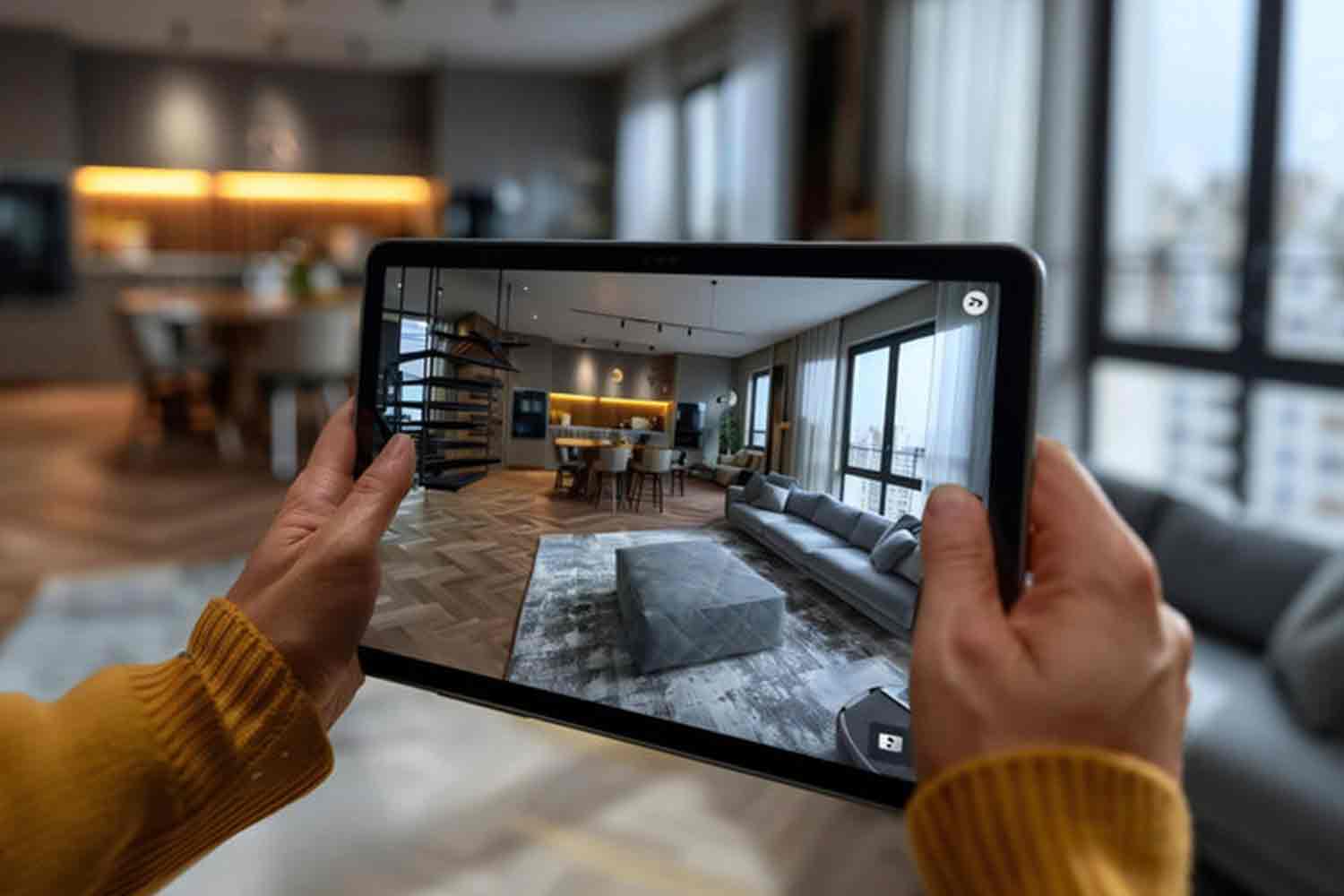
Virtual Tours in Luxury Real Estate: Pros & Cons
08/05/2025
Virtual Tours:
Opportunities and Limitations for Buyers and Sellers
Virtual tours have become an integral tool in luxury real estate, offering a tech-forward, visually immersive experience that supports both buyers and sellers. However, like any technology, they come with both advantages and limitations.
We explore how virtual tours work, and what they offer to both parties.
What Are Virtual Tours and How Do They Work?
The goal of a virtual tour is simple: to simulate an in-person experience digitally, helping buyers visualize a home’s flow, finishes, and scale without setting foot inside.
They use 360-degree photography, 3D modeling, or guided video walkthroughs to provide a near-immersive experience. Some platforms, like Matterport, allow interactive navigation, while others feature pre-recorded or live tours using Zoom, FaceTime, or proprietary tools.
The Buyer’s Perspective: Convenience Meets Caution
The Advantages
Virtual tours offer luxury buyers a highly convenient and efficient way to explore properties, particularly valuable for those with demanding schedules or who do not live locally. Being able to tour a home remotely saves time and eliminates the need to coordinate travel or multiple in-person showings, making it easier to keep the search process moving forward, even from afar.
This flexibility also allows buyers to quickly pre-qualify properties. It’s a more strategic and streamlined way to engage with the market. For buyers who value discretion, virtual tours provide a private, low-profile way to assess homes before deciding to take the next step.
Another key benefit is the ability to revisit properties multiple times. Buyers can analyze layouts more closely, involve family members or advisors in the decision, and feel more confident in their choices. In many cases, this leads to faster, more decisive offers, especially in competitive markets or when making remote purchases.
The Limitations
One of the biggest drawbacks is the inability to fully experience the sensory aspects of a property. Details like natural light, acoustics, scent, quality of materials, and overall ambiance often play a significant role in high-end real estate decisions and simply can’t be conveyed through a screen.
Another challenge is the lack of context. While a virtual tour can showcase the interior, it may not provide a full understanding of the property's setting, such as street presence, neighborhood atmosphere, or the relationship to adjacent homes and views.
There is also the emotional component. Luxury purchases are often driven by a sense of connection or aspiration that is hard to replicate virtually. A virtual tour may help narrow choices, but it rarely replaces the impact of standing inside a space and truly experiencing it.
The Seller’s Advantage: Reach, Readiness, and Refinement
The Advantages
Virtual tours significantly broaden the reach of a listing by making it accessible to high-net-worth buyers globally, 24/7. This is especially important in the luxury market, where potential buyers may live in different time zones, travel frequently, or make decisions remotely.
They also help pre-qualify interest. By offering an in-depth look at the home upfront, virtual tours reduce the number of casual or mismatched showings. This minimizes disruption to the seller's lifestyle, particularly valuable for occupied homes, and ensures that in-person visits are more targeted and meaningful.
From a marketing perspective, virtual tours enhance the property's presentation. They allow agents to craft a narrative around the lifestyle and design in a way that still photography can’t always achieve. For homes that are architecturally unique or expansive, tours help convey scale and flow, highlighting features that might otherwise be overlooked.
The Limitations
While virtual tours are a valuable marketing tool, they do come with limitations for sellers of luxury properties. One concern is that they can create unrealistic expectations, either by over-polishing the presentation or failing to fully capture the property's unique qualities and ambiance. Without the ability to guide the showing in person, sellers lose control over how the home is experienced and which features are emphasized.
There’s also the risk that buyers may dismiss a property too quickly based on something that would look or feel different in person. Additionally, virtual tours can raise security and privacy concerns, especially for high-profile sellers. A detailed digital walkthrough gives public access to the layout and interior of the home, which may not be appropriate for every property or owner.
Finding the Right Balance Between Tech and Touch
Ultimately, virtual tours represent a powerful tool in the luxury real estate toolkit. When used thoughtfully, they enhance access, elevate marketing, and drive interest from well-qualified buyers. But they are most effective when paired with expert guidance, in-person experiences, and a broader strategy that respects both the emotional and financial aspects of high-end home buying.
STAY AHEAD WITH THE INSTITUTE
For agents looking for more guidance on growing their luxury real estate practice and developing their skills when working with the affluent, learn more about The Institute’s Training Options.
Becoming a Member of The Institute is a valuable investment in your future success as a luxury real estate professional. Access curated real estate tools and resources, advanced learning experiences, and connect with a network of successful real estate professionals throughout the United States and Canada.
Our Certified Luxury Home Marketing Specialist™ (CLHMS™) designation is recognized globally. Take advantage of the training offered and the information provided through The Institute’s Local Luxury Market Reports, published monthly exclusively for members.